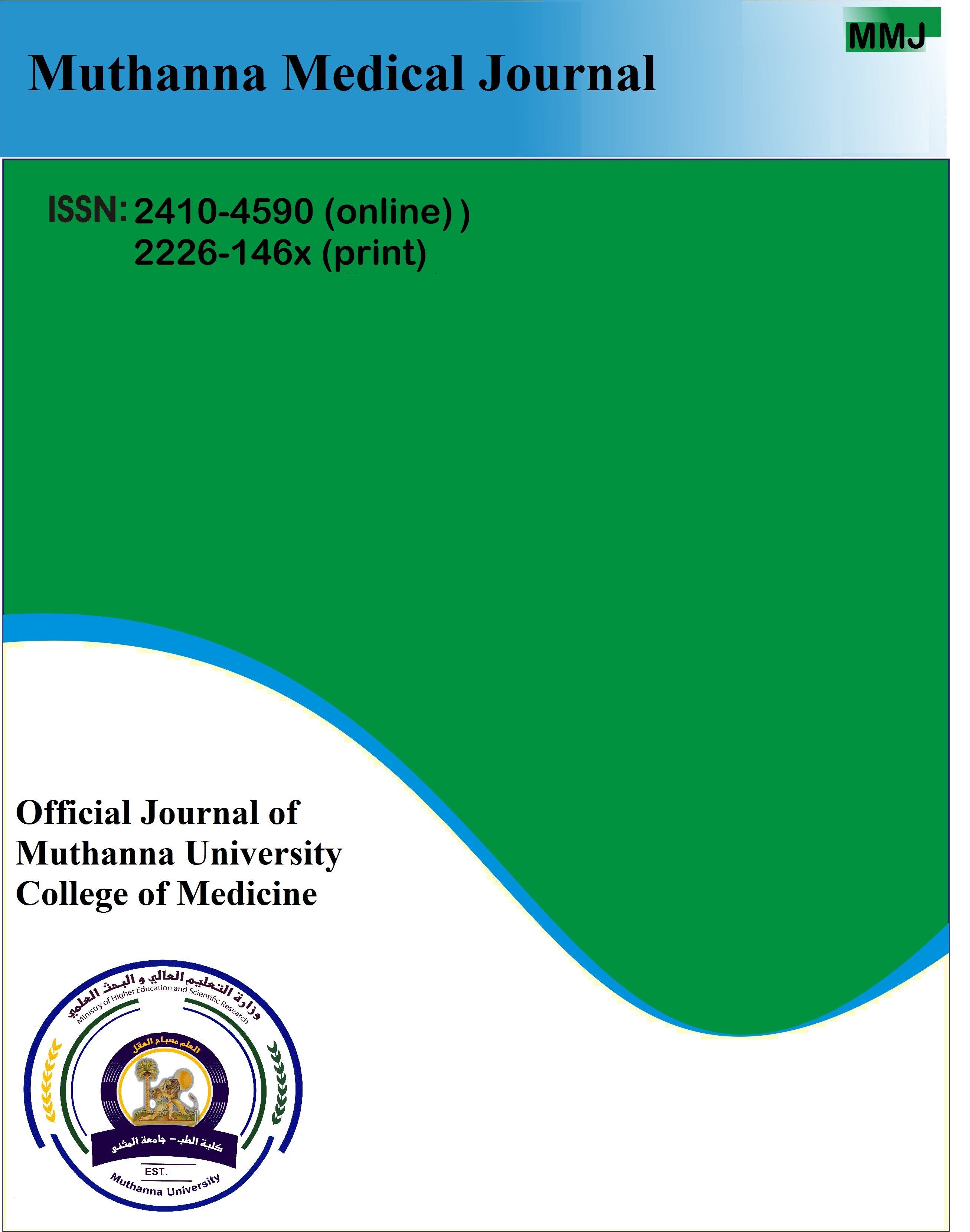Muthanna Medical Journal
Volume 9, Issue 2, 2022 Page 132-145
http://dx.doi.org/10.52113/1/1/2022-132-145
Firas Makki Wadday ¹*, Adnan Handhil aljothary ², Tariq jabur Fakhri Almamoori ³
Correspondence author: firaswaddai3@gmail.com
¹Ebn Saif Hospital for pediatrics
² Department of Pediatrics/ Hummorabi medical college/University of Babylon
³ Al Imam Al Sadiq teaching hospital, Babylon health directorate
Received 22 August 2022, Accepted 13 October 2022, Available online 3 November 2022.
Copyright © 2022 FW. This is article distributed under the terms of the Creative Commons Attribution License http://creativecommons.org/licenses/by/4.0), which permits unrestricted use, distribution, and reproduction in any medium, provided the original work is properly cited.
Abstract
The hepatitis A virus, a picornavirus, is a common cause of hepatitis worldwide. Spread of infection is generally by feco-oral route. Hepatitis A is endemic in developing countries, and most residents are exposed in childhood. The aim of study is to evaluate epidemiology, clinical course, and laboratory profile of hepatitis A in children. Method: In this cross-sectional investigation, 250 children identified with acute viral hepatitis A by IgM antiHAV were hospitalized to our infectious unit from March 2018 to December 2018. The child’s location of residence, source of drinking water, manner of fecal sewage, nursery attendance, eating outside the house, fever, gastrointestinal symptoms, and history of contact with a hepatitis patient were recorded. Total serum bilirubin, blood urea nitrogen, liver functions test (AST, ALT), bleeding profile, complete blood count, and abdominal ultrasound were performed. Results: (7.3 2.6) year-olds averaged. The study included 128 women (51.20%) and 122 men (48.80%). 238 (95.2%) patients reported yellow sclera, fever in 181 (72.4%), vomiting in 180 (72%), and stomach pain in 171 (67.41%). 168 individuals had hepatomegaly, 34 had splenomegaly, and 6 had ascites. 72 (28.8%) patients had anemia, 15 (6%), leucopenia, 41 (16.4%), and 9 (3.6%) had thrombocytopenia. Rural areas exhibited greater ALT, TSB, PT, PTT, and blood urea (P-values = 0.006, 0.020, 0.027, 0.010, and 0.003). 17 (6.8%) people experienced hepatic encephalopathy (8.3%), ascites (6.4%), and pleural effusion (3.2%) 233 (96%) had good results, while 3% needed tertiary care. One patient died from the illness (0.4%). Conclusion: Although hepatitis A is a self-limiting disease, it’s have low rate of complications. hepatitis A is one of important health problems but, still affected large numbers of children.
Keywords: Acute, Viral Hepatitis, Children, Epidemiological, Clinical course, Babylon